Delving deep in to the Gothic
- Published
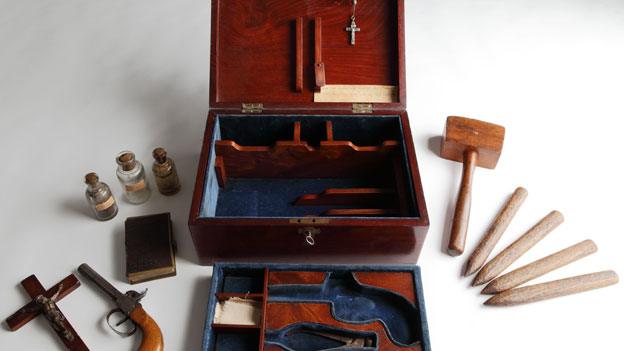
A Victorian vampire kit contains all the necessary equipment for hunting down vampires
A new exhibition at the British Library in London looks at the changing taste for the Gothic in British writing. Exhibits range from a wooden box containing vampire-killing equipment (possibly not 100% authentic) to an animated Were-Rabbit. The show's curator says amid the gore and the chills, Gothic writing has always had a streak of irony and humour.
Tim Pye knows the intriguing vampire-slaying kit is bound to prove a popular part of the exhibition Terror and Wonder - The Gothic Imagination, which opens on 3 October. But as the show's lead curator he acknowledges its provenance is not as complete as most of what the British Library puts on show.
"The box contains a pistol, some wooden stakes - all the elements that come in handy when you're in deadly pursuit of a vampire. Individual items are Victorian but there's no real documentary evidence of such a kit existing before the 1970s.
"But it doesn't really matter. The kit illustrates how persistent vampires and the Gothic have been in British culture generally. So we're delighted to have it."
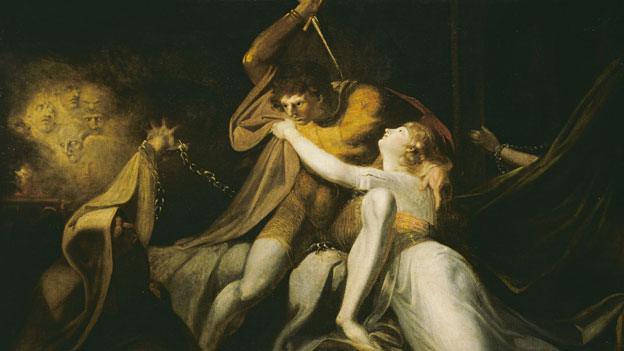
Percival Delivering Belisane from the Enchantment of Urma by Henry Fuselli has been loaned by the Tate
The British Library is marketing the new exhibition as the biggest investigation yet of Gothic literature. In accordance with most literary histories it takes as its starting point Horace Walpole's 1764 novel The Castle of Otranto. But definitions are loose enough to include Hammer Horror, the modern Goth scene and Stanley Kubrick's The Shining.
Walpole's story claimed to be based on a manuscript owned by "an ancient Catholic family in the north of England" and told of mysterious events in Italy. Tim Pye says an interest in religion and in what then seemed distant parts of Europe was typical of early Gothic literature.
But if Walpole's book is little read today, the exhibition also features part of the manuscript of the 1818 work which, for many, remains the first big landmark of Gothic sensibility - Mary Shelley's Frankenstein.
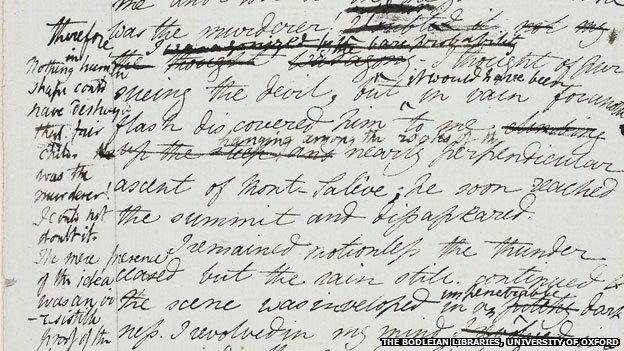
An early manuscript of Mary Shelley's Frankenstein, or The Modern Prometheus, is marked with comments by husband Percy Shelley
Mr Pye says the manuscript is revealing. "Mary Shelley was barely 20, so it's interesting to see the comments which her future husband Percy Shelley made in the margins. It's rare you get such a detailed idea of how a world-famous story developed."
And the show includes an extract from James Whale's famous 1935 Hollywood film The Bride of Frankenstein, starring Boris Karloff. The idea is to show how the basic elements of Gothic literature often transferred easily to film.
"You have the foreboding and fear of course - and castles and lightning. But Whale realised there's a sexual element to the Gothic imagination which definitely exists in his two Frankenstein films (the first was in 1931).
"Parts of them are camp and theatrical in an over-the-top way but Whale was only picking up on a strain which already existed in Gothic writing. Even back in the late 18th Century writers knew they were sometimes flirting with the absurd."
Mr Pye says Gothic literature has proved remarkably adaptable.
The exhibition is basically about the Gothic in British culture - although that definition has been bent to include the American Edgar Allan Poe.
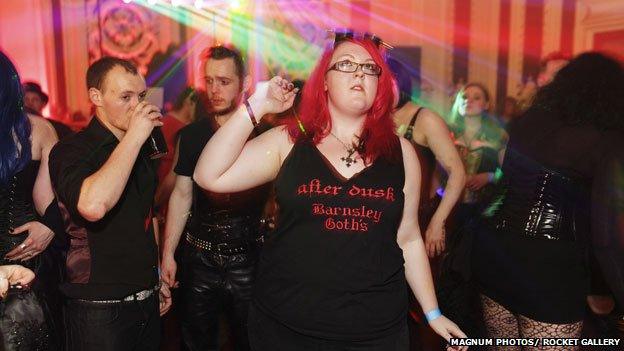
How the gothic has influenced today's culture is examined in photographer Martin Parr's series Whitby Goths
"You just can't omit Poe from any discussion of this area - he's too good and he had a big influence on people like Robert Louis Stevenson and Oscar Wilde."
But Tim Pye says there is something about ghost stories and tales of horror which appeals to the British in particular.
"Perhaps it all came from the Victorian age when sensuality was repressed: something like Bram Stoker's Dracula (published 1897) provided an outlet for fears and urges people seldom discussed openly."
The exhibition includes two documents which Stoker used for research: a printed image of Vlad the Impaler, the model for the fictional Dracula, and a map of Transylvania - a place now so associated with his book that later generations have sometimes been surprised that it actually exists.
Mr Pye says the footprint of the Gothic in literary form has been remarkably wide. "Film adaptations are obvious of course and there's been a clear Gothic influence on modern writers such as Angela Carter and Neil Gaiman.
"But we can also see how Poe and others influenced the early Goth music scene. And a piece of art like Exquisite Corpse by Jake and Dinos Chapman has Gothic origins."
The British Library has worked with BBC Two and BBC Four to create programmes this autumn illustrating the Gothic strain in Britain in everything from visual art to architecture.
"We've made the exhibition as inclusive as possible but there's a huge amount to get in. Our ideas of what is frightening or unsettling change over the decades," says Mr Pye.
"We have exhibits relating to zombies, for instance. They only came into the Gothic lexicon in 1929 when the American William Seabrook visited Haiti and provided the first real description of the zombie in the voodoo religion. That description influenced almost all other descriptions for decades. More recently zombie mash-up novels have made them slightly ridiculous but they're still very popular."
For the last decade vampires have been the dominant Gothic strain in Young Adult fiction and on film. Tim Pye thinks they're yesterday's monster.
"Vampires are so over. It's time for the zombie."
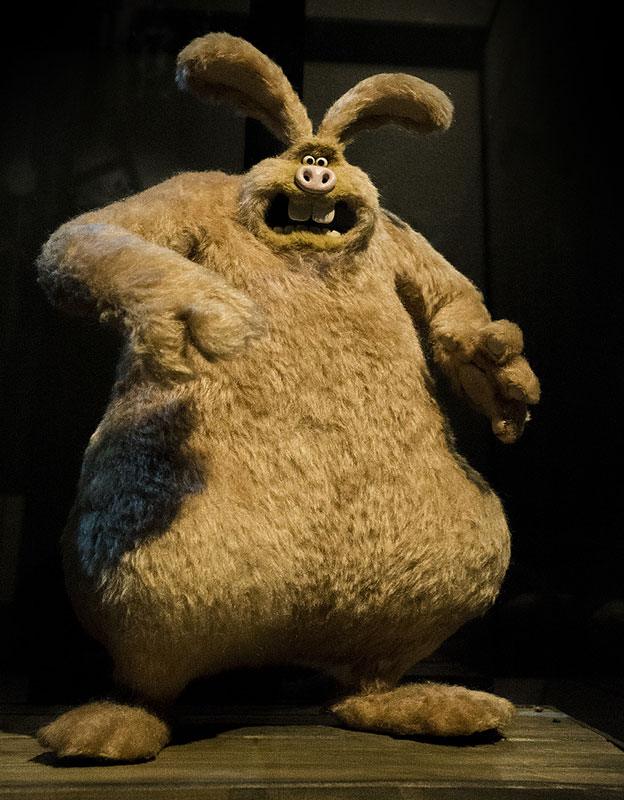
The Wallace and Gromit Were-Rabbit makes an appearance in the exhibition